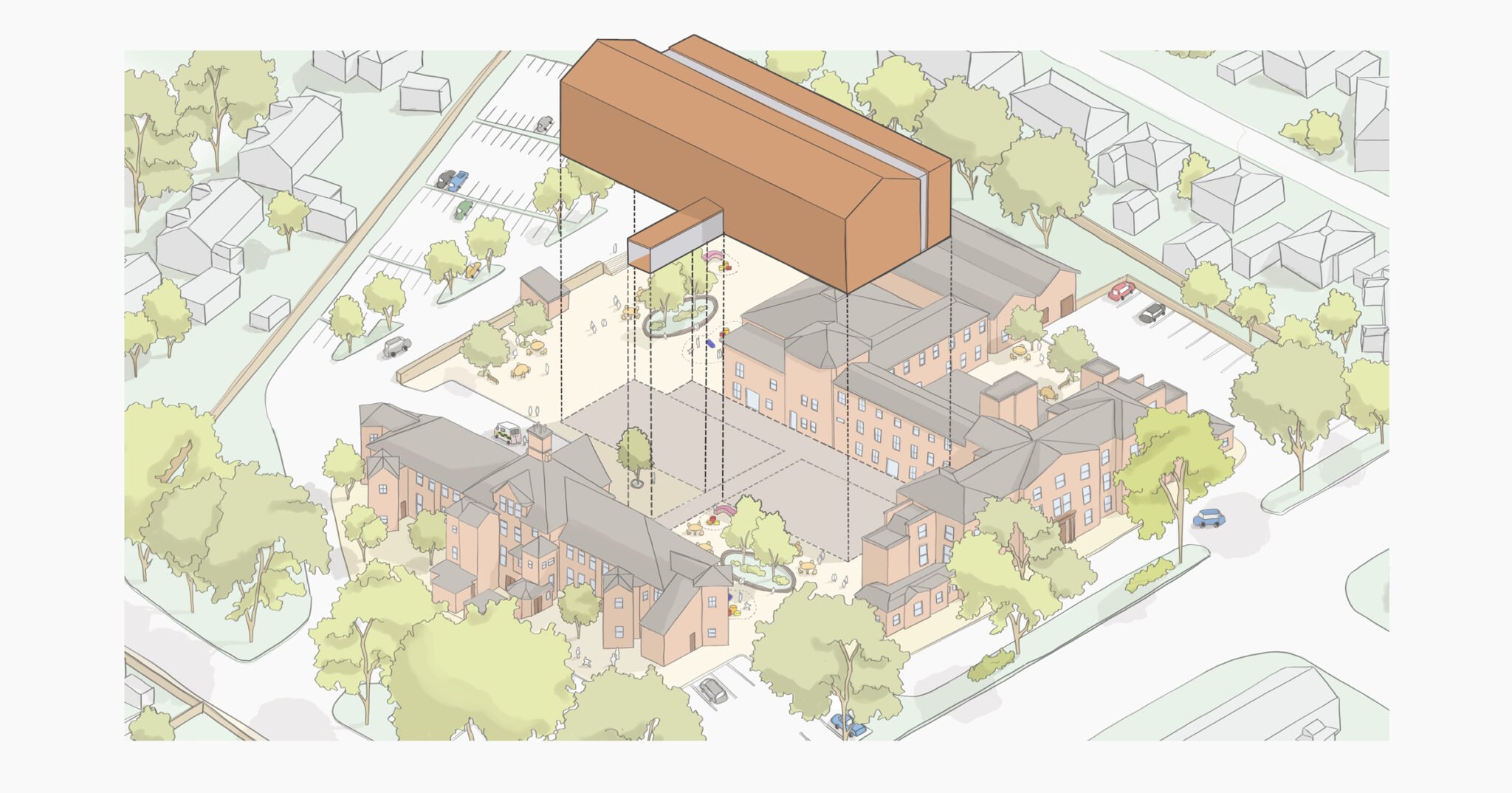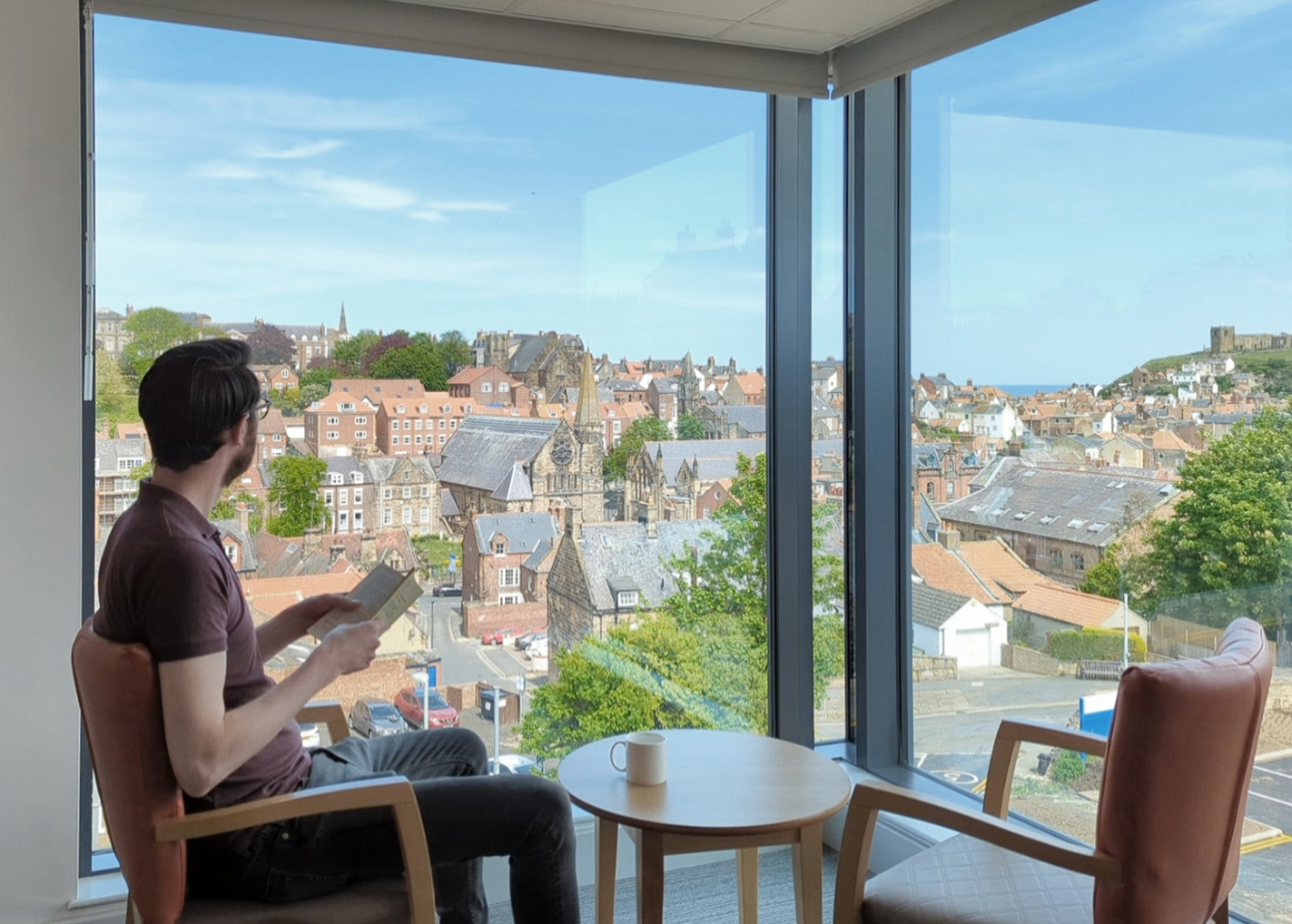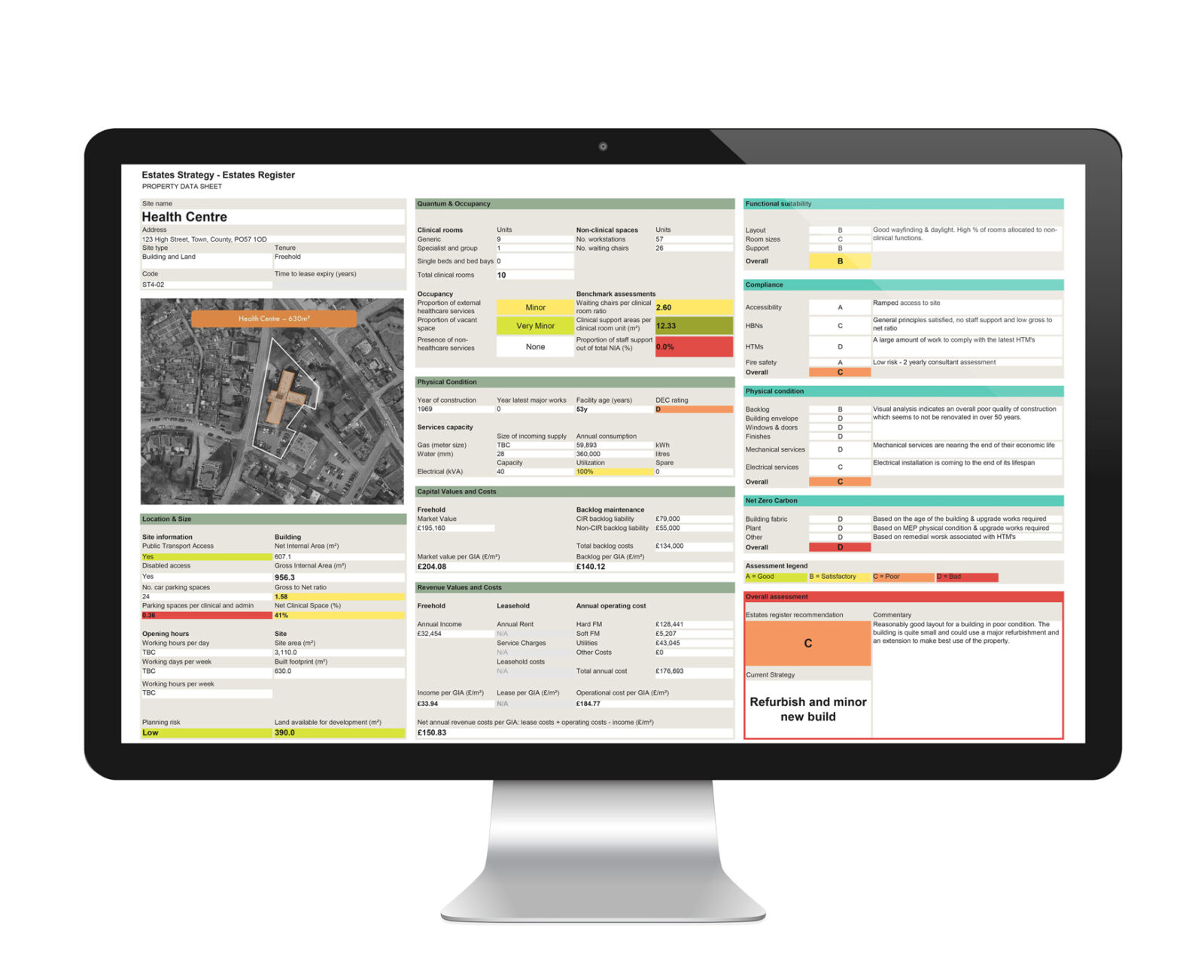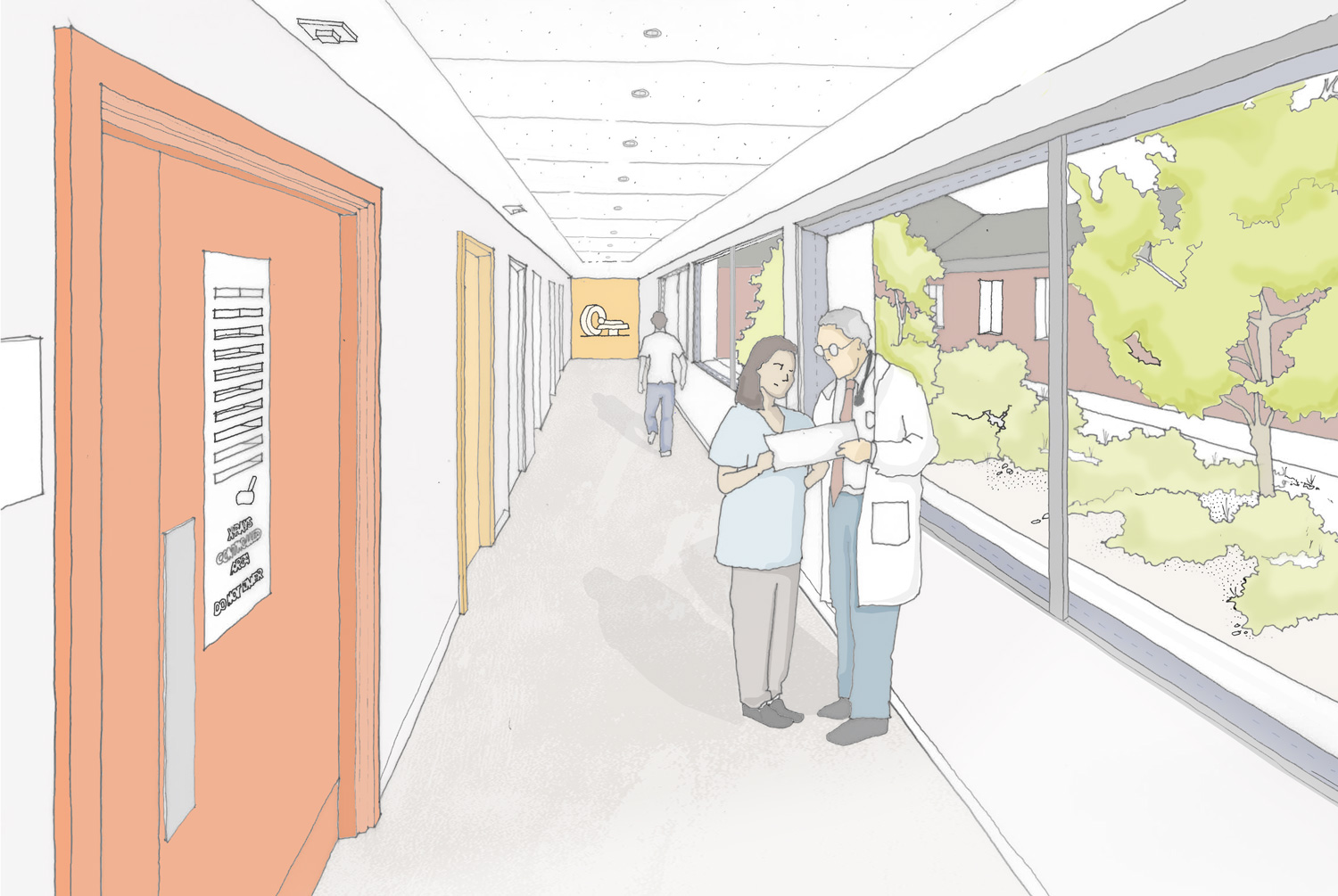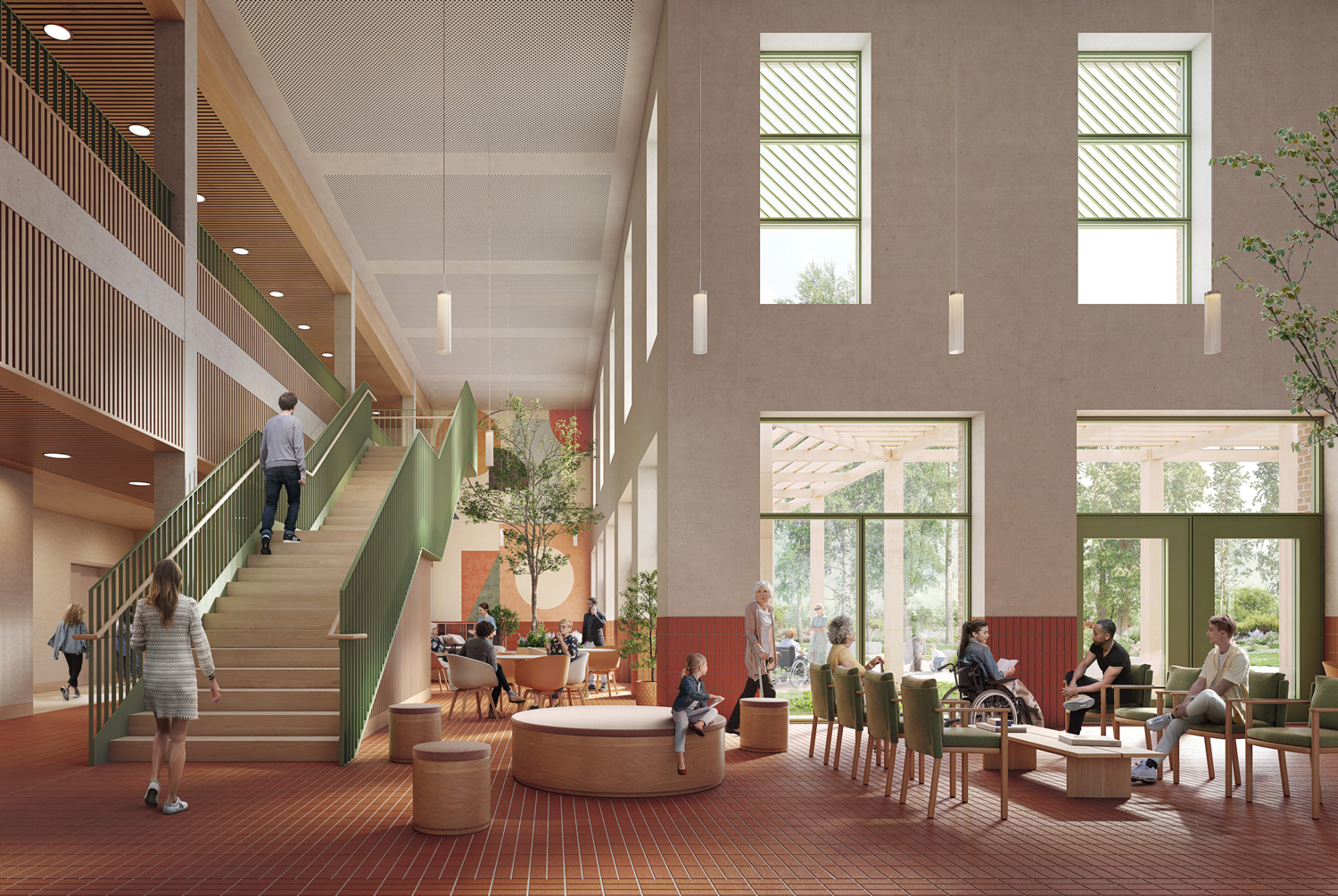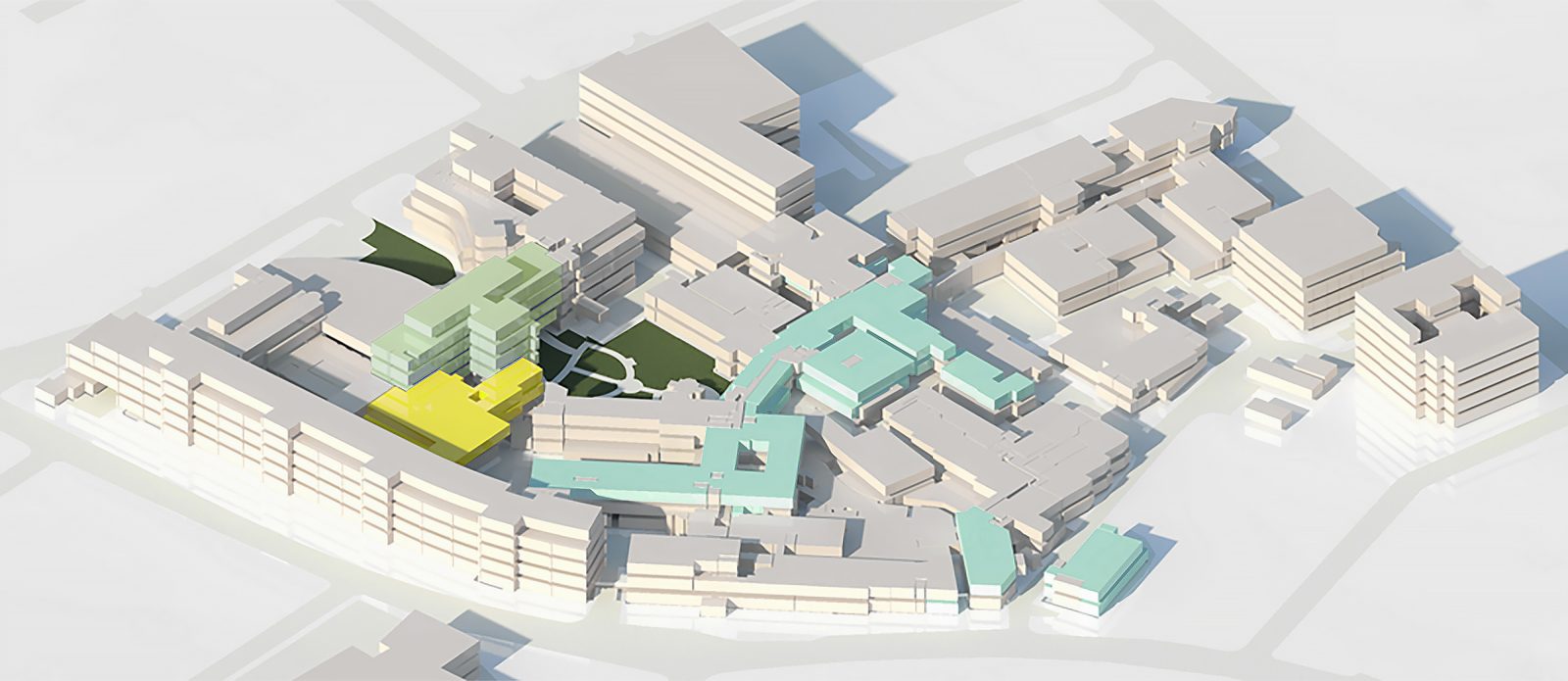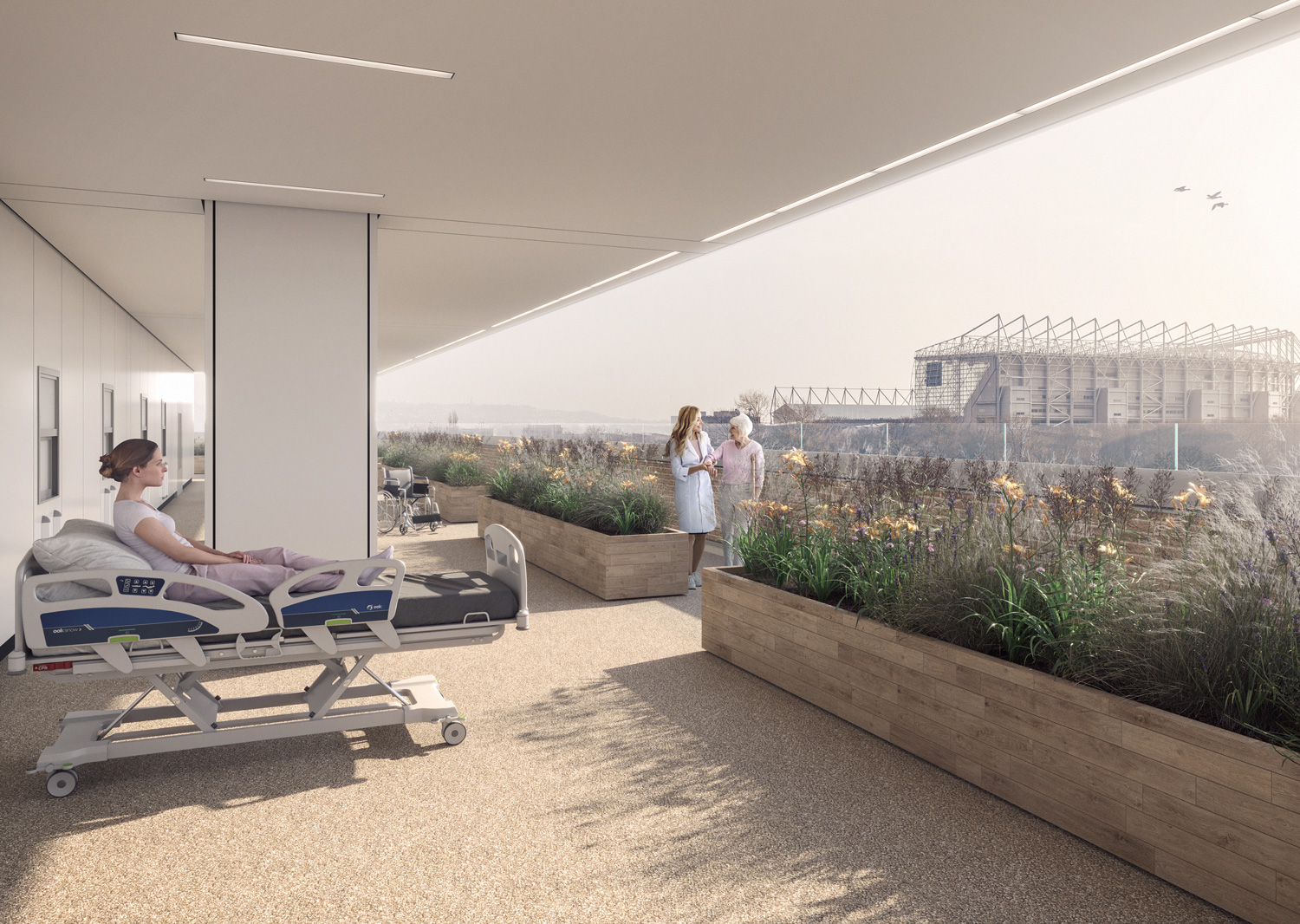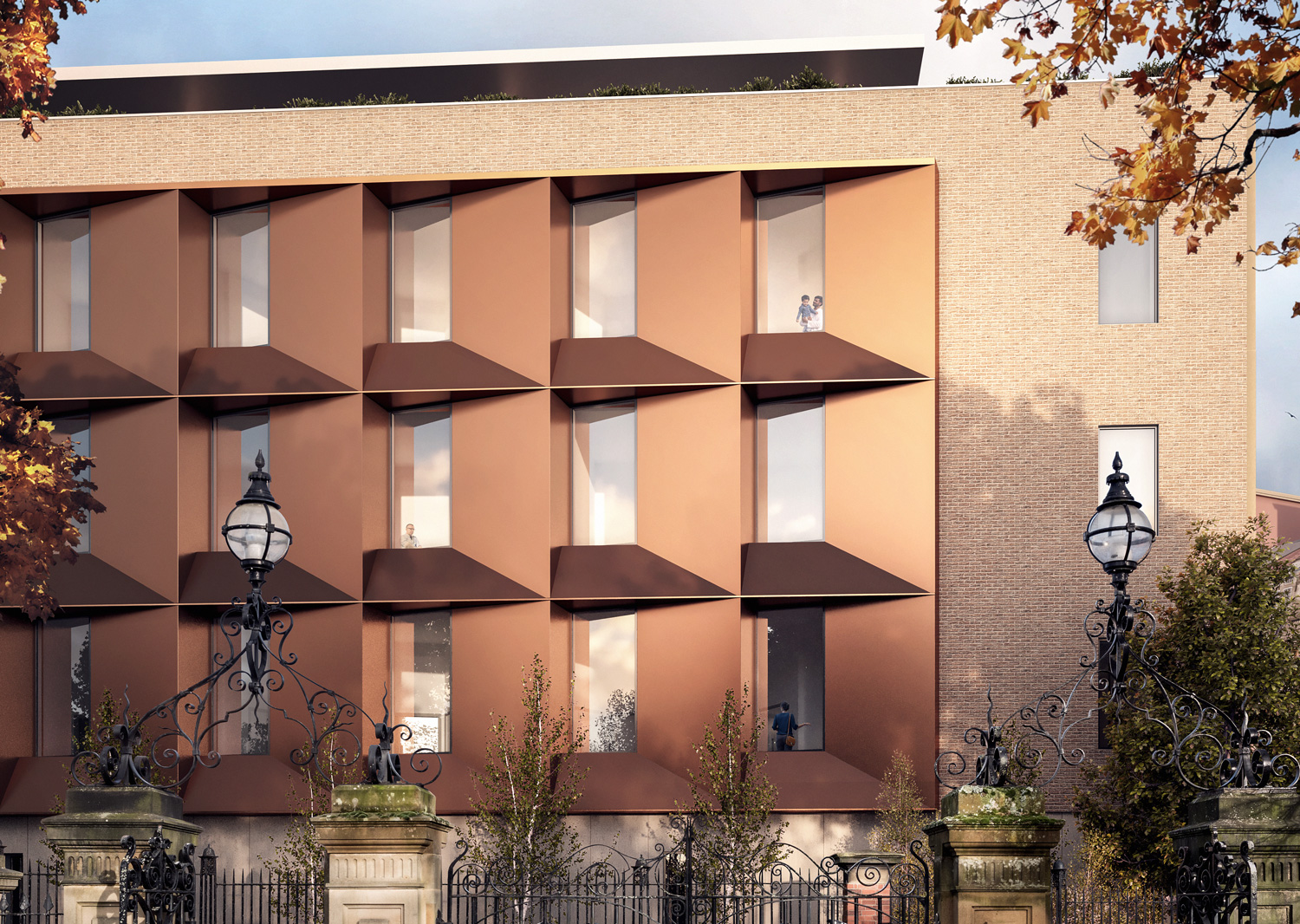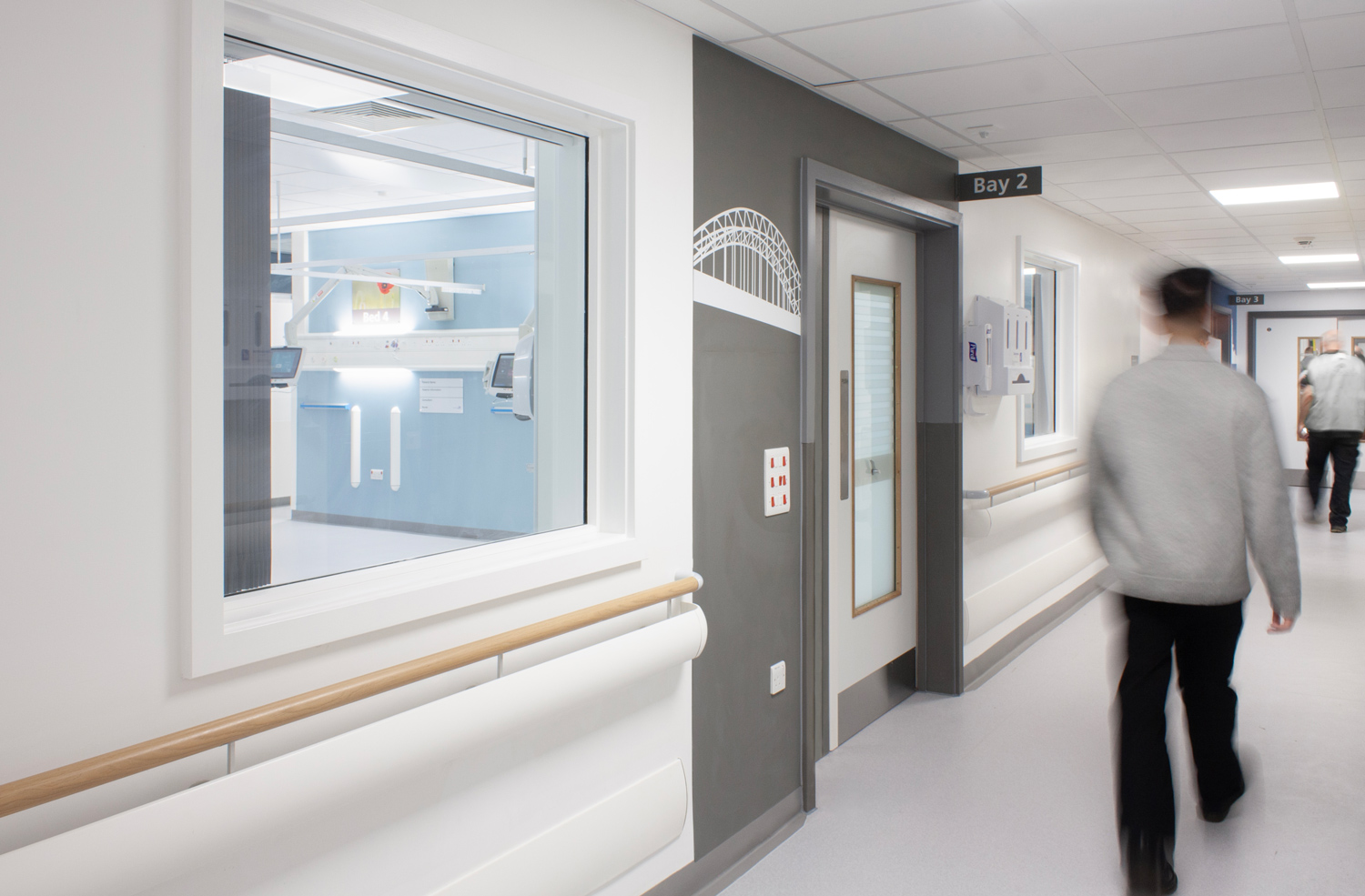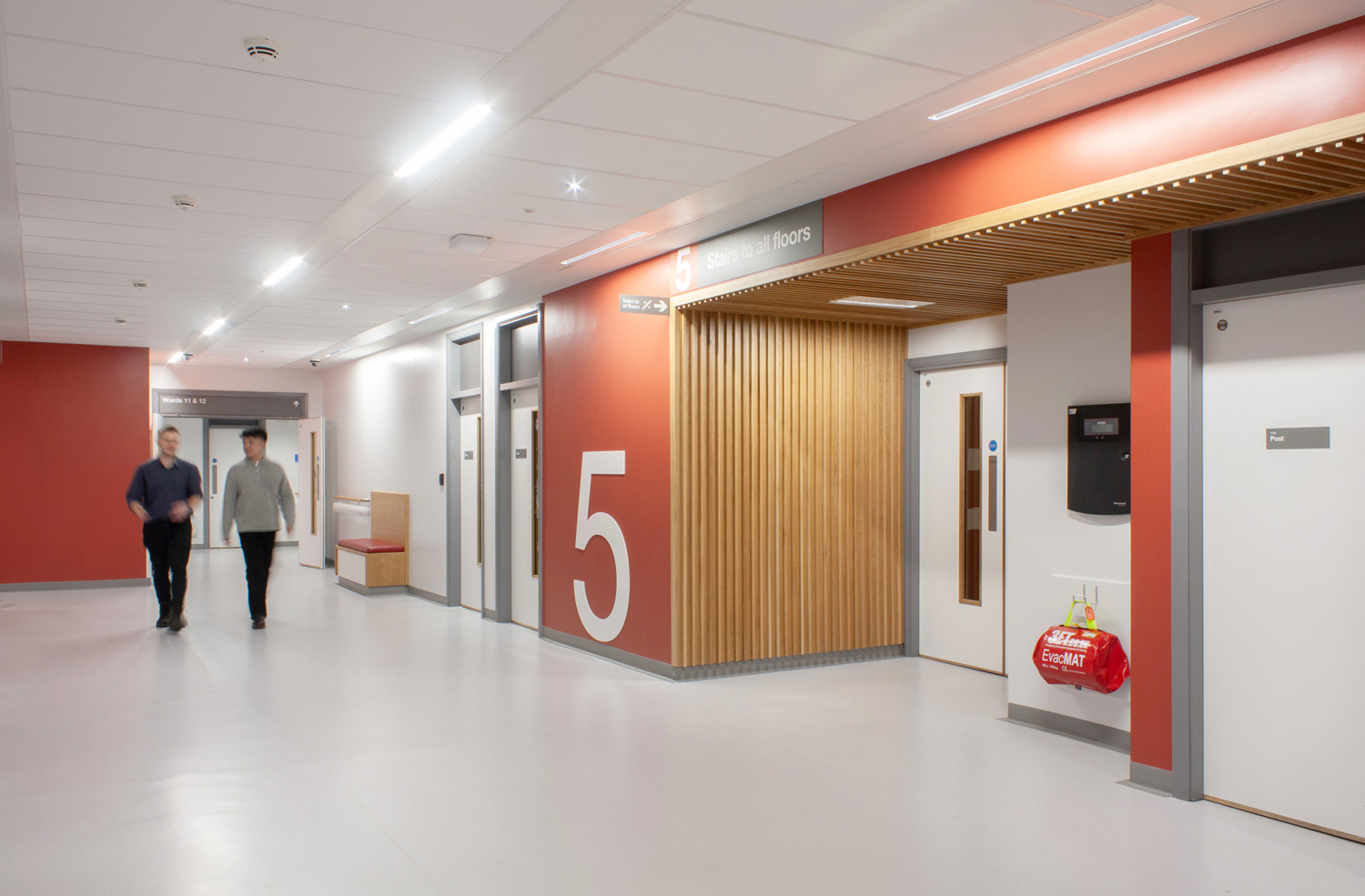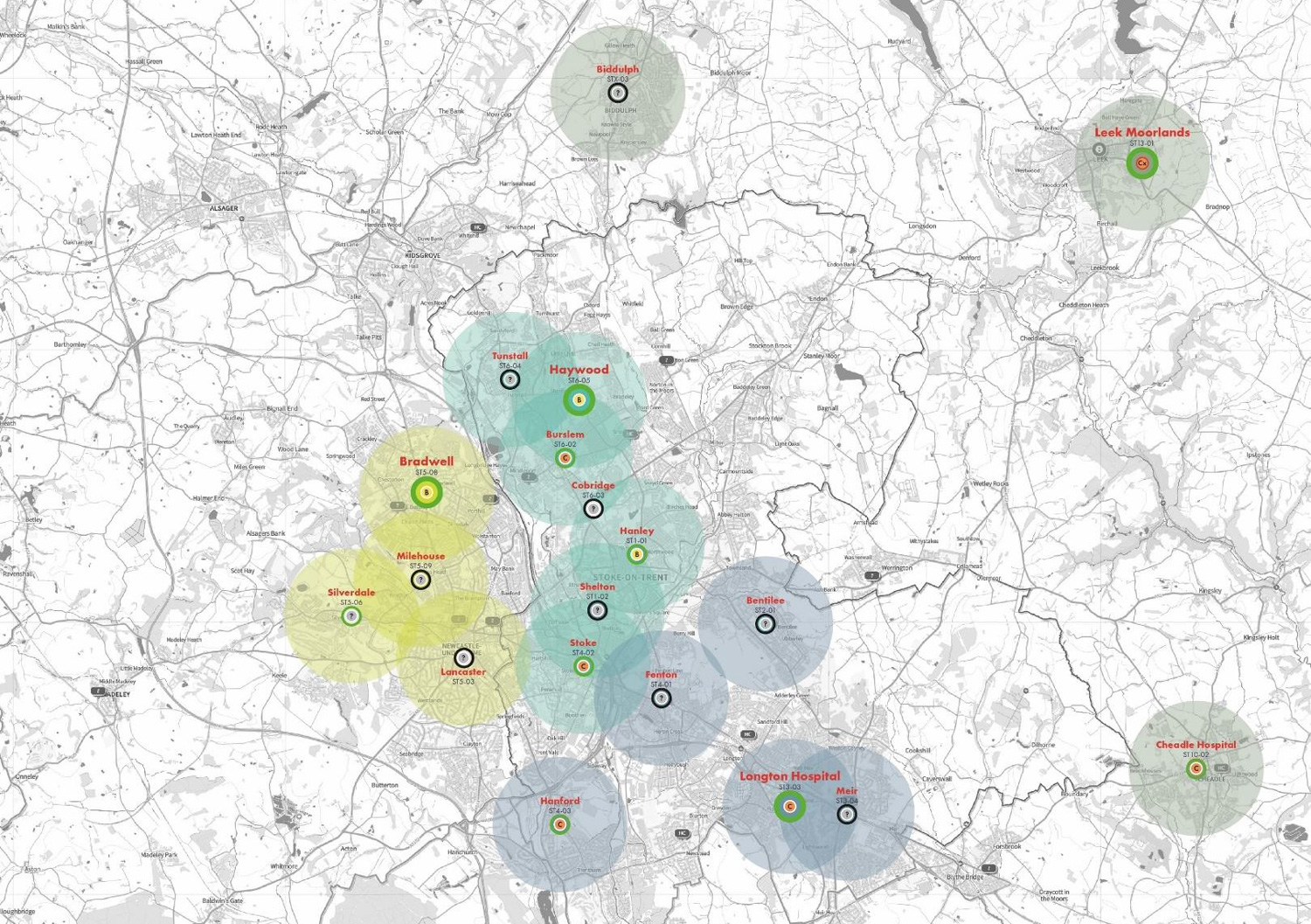In implementing the estate plan, we were commissioned by the Trust to design a pivotal project, the £225m New Specialist Hospital Building. This carefully planned clinical building provides a sustainable new home for specialist services at the Royal Victoria Infirmary. The building has been designed to be net zero carbon ‘in use’ and to achieve an ‘Outstanding’ BREEAM rating to minimise its environmental impact. It does this while supporting patient wellbeing by prioritising light, space, and therapeutic views to nature. Rooms have been arranged to exploit views to inner courtyards and green spaces which neighbour the site, and a rooftop outdoor treatment space provides bed-bound patients with the benefits of fresh air, views and landscaping, aiding recovery. With the flexibility to adapt to future changes in service delivery, the building will provide long term value for the investment.
Representing a more modest commitment of capital investment, alongside this work, we were commissioned to undertake an Internal Improvement Programme to bring a structured and consistent approach to strategically important refurbishment projects across the Trust’s sites. Here, the considered reuse of existing spaces has significantly reduced the embodied carbon impact, as well as delivering high-quality spaces for excellent value. Designed to a common standard, the internal spaces provide an environment for care that is calming and reduces anxiety, whilst conveying a sense of professional efficiency. Particular attention has been given to design for patients with dementia and frailty, as well as technical standards and guidance compliance, working within the constraints of the existing structures.
